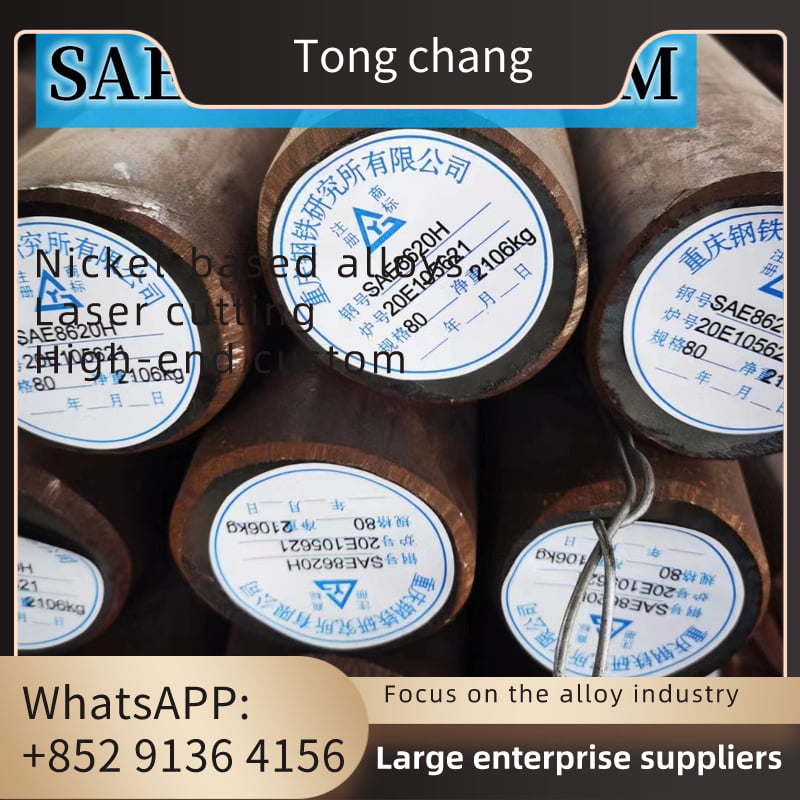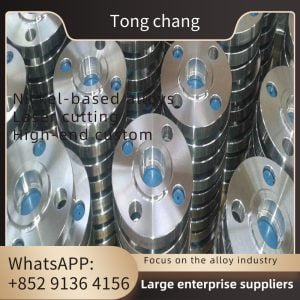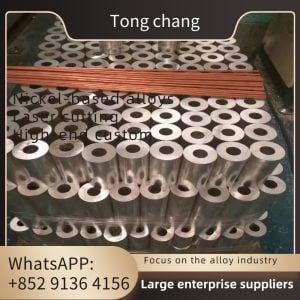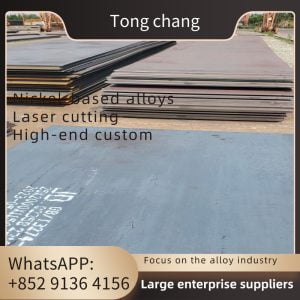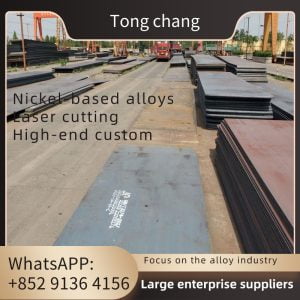| Product Name: | ASTM A213 TP321 SEAMLESS TUBES | Specification: | ASTM A213 / ASME A213 |
|---|---|---|---|
| Dimensions: | ASTM, ASME. API | Size: | 1/8’NB – 16’NB |
| Schedule: | SCH20, SCH30, SCH40, STD, SCH80, XS, SCH60, SCH80, SCH120, SCH140, SCH160, XXS | Length: | Single Random, Double Random & Cut Length |
| Form: | Round,Square,Rectangular,Hydraulic Etc. | End: | Plain End, Beveled End, Treaded |
| Type: | Seamless, Welded | ||
| High Light: | astm a213 stainless steel seamless tubing, asme sa 213 heat exchanger tubing, tp321 heat exchanger tubing | ||
ASTM A213 / ASME SA 213 TP321 S32100 STAINLESS STEEL SEAMLESS HEAT EXCHANGER TUBING
SA213 TP321 is a specification of heat exchanger tubes that are made from the 321 austenitic stainless steel. The SA 213 specifies pipe products for heat exchangers in different material grades, both the ferritic and austenitic steels.TONG CHUANG GROUP is a supplier of all kinds of stainless steel pipes. The SA213 TP321 Material is special in that the composition includes titanium which reduces the density of the ASME SA213 TP321 and therefore making it lightweight.
321 Stainless Steel Exhaust Tubing for Automotive systems
The addition of titanium also provides the ASTM A213 TP 321 pipes with high corrosion resistance properties. The intergranular corrosion risk present in most high carbon steels is reduced in the 321 Stainless Steel Tubing due to the addition of titanium. The 321 Stainless Steel Exhaust Tubing can last longer in high temperatures. Therefore the 321 Stainless Steel Seamless Tubing is used in heat exchangers and in super heaters. There are different types of these pipes such as the 321 Stainless Steel Flexible Tubing which is easy to install and to maintain. The application of the Type 321 Stainless Steel Tubing can also be seen in boilers and in condensers. We produce high quality 321 SS Tubing in different sizes and types. Our SS 321 Seamless Tubing is suitable for smaller size piping with high accuracy. This corrosion resistant steel could also be identified as the 321 Cres Tubing. Our customers can get custom finishes of these pipes as well. Please contact us with any of your inquiries on product details or pricing.
Mechanical & Physical Properties
| Density | 8.0 g/cm3 |
| Melting Point | 1454 °C (2650 °F) |
| Tensile Strength | Psi – 75000 , MPa – 515 |
| Yield Strength (0.2%Offset) | Psi – 30000 , MPa – 205 |
| Elongation | 35 % |
Chemical Composition
| SS 321 | SS 321H | |
| Ni | 9 – 12 | 9 – 12 |
| Cr | 17 – 19 | 17 – 19 |
| C | 0.08 max | 0.04 – 0.10 |
| N | 0.10 max | |
| Fe | Balance | |
| Mn | 2 max | 2 max |
| Si | 0.75 max | 0.75 max |
| S | 0.03 max | 0.03 max |
| P | 0.045 max | 0.045 max |
| Ti | 5xC min 0.60% max | 4xC min 0.60% max |
Specifications of ASTM A213 TP321 Stainless Steels
| Grade | UNS No | Old British | Euronorm | Swedish SS | Japanese JIS | ||
| BS | En | No | Name | ||||
| 321 | S32100 | 321S31 | 58B, 58C | 1.4541 | X6CrNiTi18-10 | 2337 | SUS 321 |
| 321H | S32109 | 321S51 | – | 1.4878 | X10CrNiTi18-10 | – | SUS 321H |
| 347 | S34700 | 347S31 | 58G | 1.4550 | X6CrNiNb18-10 | 2338 | SUS 347 |
| These comparisons are approximate only. The list is intended as a comparison of functionally similar materials not as a schedule of contractual equivalents. If exact equivalents are needed original specifications must be consulted. | |||||||
321 / 321H Stainless Steel is a titanium-stabilised version of 304, used in particular applications within the sensitizing temperature range. Its resistance to sensitization, coupled with its higher strength at high temperature makes it suitable in application where 304 will become sensitized, or where 304L has insufficient hot strength. It is not subject to weld decay intergranular corrosion when exposed to mildly corrosive environments. However, welded 321 must never be used in highly oxidising environments as it is liable to ‘Knife-line’ attack. However, 321 is a much better option in operating temperature environments in excess of 500° C and therefore has its own merits. Alloy 321 stainless steel tube is also advantageous for high temperature service because of its good mechanical properties. Alloy 321 stainless steel offers higher creep and stress rupture properties than Alloy 304 and, particularly, Alloy 304L also be considered for exposure where sensitization and intergranular corrosion are concern.
Alloys 321 (S32100) and 347 (S34700) are stabilized stainless steels which offer as their main advantage an excellent resistance to intergranular corrosion following exposure to temperatures in the chromium carbide precipitation range from 800 to 15000F (427 to 8160C). Alloy 321 is stabilized against chromium carbide formation by the addition of titanium. Alloy 347 is stabilized by the addition of columbium and tantalum.
While Alloys 321 and 347 continue to be employed for prolonged service in the 800 to 15000F (427 to 8160C) temperature range, Alloy 304L has supplanted these stabilized grades for applications involving only welding or short time heating.
Alloys 321 and 347 stainless steels are also advantageous for high temperature service because of their good mechanical properties. Alloys 321 and 347 stainless steels offer higher creep and stress rupture properties than Alloy 304 and, particularly, Alloy 304L, which might also be considered for exposures where sensitization and intergranular corrosion are concerns. This results in higher elevated temperature allowable stresses for these stabilized alloys for ASME Boiler and Pressure Vessel Code applications. The 321 and 347 alloys have maximum use temperatures of 15000F (8160C) for code applications like Alloy 304, whereas Alloy 304L is limited to 8000F (4260C).
High carbon versions of both alloys are available. These grades have UNS designations S32109 and S34709.
TP321 Stainless Steel Tubing
| Type | Seamless Tubing | Welded Tubing |
| Size | 1/2" OD – 12" OD | 1/2" – 12" OD, Guage: 25 SWG – 10 SWG |
| O.D. | 3.00 – 219.10 mm | 6.35 to 114.3 mm |
| Thickness | 0.40 – 12.70 mm | 0.8 – 12.7 mm |
| Length | Single, Double Random & Cut Length | up to 26 Meters |
ASTM A213 TP321 Stainless Steels Apllication
The grade 321 steel can be made into plates, sheets, and coils to be used in the following:
1. Food preparation equipment particularly in chloride environments.
2. Laboratory benches & equipment.
3. Coastal architectural panelling, railings & trim.
4. Boat fittings.
5. Chemical containers, including for transport.
6. Heat Exchangers.
7. Woven or welded screens for mining, quarrying & water filtration.
8. Threaded fasteners.
9. Springs.



